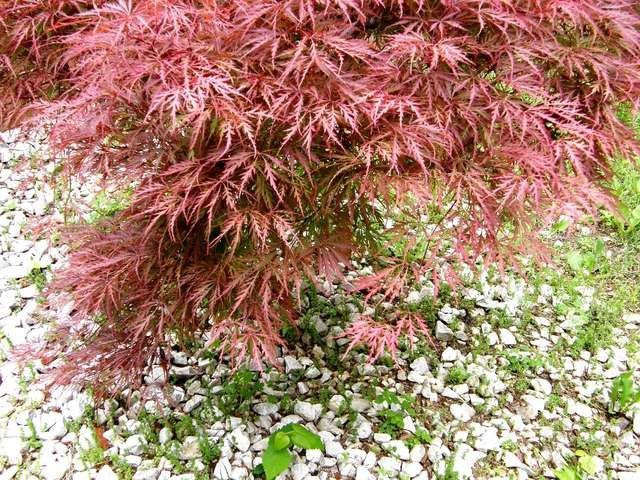Bulbs
Flower Basics
Flower Beds & Specialty Gardens
Flower Garden
Garden Furniture
Garden Gnomes
Garden Seeds
Garden Sheds
Garden Statues
Garden Tools & Supplies
Gardening Basics
Green & Organic
Groundcovers & Vines
Growing Annuals
Growing Basil
Growing Beans
Growing Berries
Growing Blueberries
Growing Cactus
Growing Corn
Growing Cotton
Growing Edibles
Growing Flowers
Growing Garlic
Growing Grapes
Growing Grass
Growing Herbs
Growing Jasmine
Growing Mint
Growing Mushrooms
Orchids
Growing Peanuts
Growing Perennials
Growing Plants
Growing Rosemary
Growing Roses
Growing Strawberries
Growing Sunflowers
Growing Thyme
Growing Tomatoes
Growing Tulips
Growing Vegetables
Herb Basics
Herb Garden
Indoor Growing
Landscaping Basics
Landscaping Patios
Landscaping Plants
Landscaping Shrubs
Landscaping Trees
Landscaping Walks & Pathways
Lawn Basics
Lawn Maintenance
Lawn Mowers
Lawn Ornaments
Lawn Planting
Lawn Tools
Outdoor Growing
Overall Landscape Planning
Pests, Weeds & Problems
Plant Basics
Rock Garden
Rose Garden
Shrubs
Soil
Specialty Gardens
Trees
Vegetable Garden
Yard Maintenance
How to Trim a Japanese Maple Tree
How to Trim a Japanese Maple Tree. Japanese maple trees are one of the loveliest trees that can add beauty and color to any landscape. There are different varieties of Japanese maple trees, some of them can be left alone without pruning and some, just like the Cutleaf Japanese Maple (acer palmatum dissectum), should be pruned to improve appearance...

Japanese maple trees are one of the loveliest trees that can add beauty and color to any landscape. There are different varieties of Japanese maple trees, some of them can be left alone without pruning and some, just like the Cutleaf Japanese Maple (acer palmatum dissectum), should be pruned to improve appearance and keep them healthy. All you need is one afternoon weekend, use of correct pruning tools and techniques to accomplish pruning a Japanese maple tree.
Things You'll Need
Pruning shears
Handsaw or hacksaw
Water hose
Safety goggles
Work gloves
Examine the overall appearance of the Japanese maple tree. Step back as far as you can that would allow you to see the entire tree form. Go around and look at the tree on all angles. Examining the tree will allow you to see shape and be able to picture how you would balance the overall look as you prune.
Go underneath the Japanese maple tree and remove the lower branches. If the tree is low-sweeping, you may need to do this while lying on your back on the ground. Cut the lowest branches that touch the ground.
Use a hacksaw to prune a Japanese maple tree. Hacksaws or handsaws are great for removing bigger and thicker branches. Use pruning shears to remove smaller ones.
Stand up again, look at the tree, and see if removing the lower branches have exposed more of the trunk.
Go back and cut more branches under the tree to increase the height of the trunk. "Crown Raising" is a pruning technique that would expose more of the trunk by removing the lower branches. Concentrate on removing the dead and wayward branches first before removing the healthier ones.
Stand up again and look at the overall appearance. Once you are satisfied, that you have exposed enough of the tree trunk and satisfied with the height of the crown, you can now proceed to "crown thinning," which is a method to remove some of the branches and leaves to let in more air and sunlight.
Thin the crown by removing some of the dead and crossed limbs on the upper portion of the tree. Remove them sparingly. Be careful when cutting or pruning. You have to examine the overall look before performing more cuts. Since branches take a while to grow back, at times taking a couple of years, be sure to remove them little by little.
Remove the cut branches and leaves from the ground. Throw them in a compost pile or recycle the branches by converting them into mulch.
Spray some water on the tree to eliminate small debris that fell through while cutting. This will ensure that your Japanese maple tree will have a clean appearance.
Tips & Warnings
Best time to prune the Cutleaf Japanese Maple trees is during the later half of summer or close to fall. Best time for other maple trees is during dormant season or late winter to eliminate loss of sap, which can add stress to the maple trees.
Use safety goggles and work gloves to avoid poking your eyes with branches or being injured.